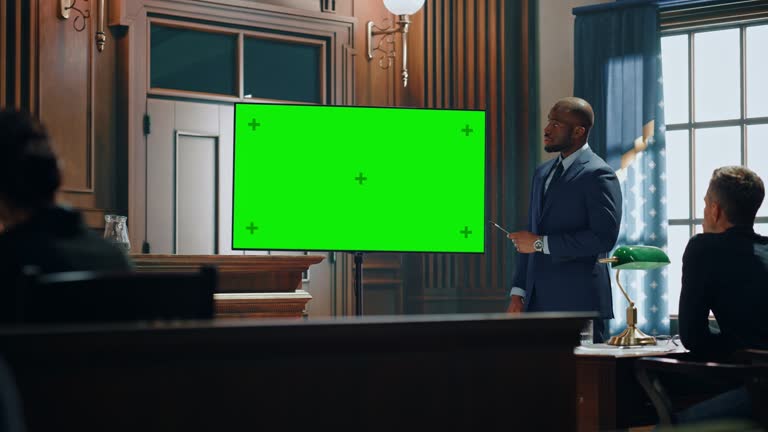Understanding the Art of Trial Presentations: Key Approaches for Reliable Lawful Arguments
Navigating the Intricacies of Trial Presentations: Tips for Seamless Distribution and Engaging Arguments
In the realm of legal procedures, the art of trial presentation stands as a vital factor of success. The complexities fundamental in test discussions call for a delicate equilibrium of ability, approach, and skill.

Understanding Trial Objectives
To effectively browse a trial, it is vital to have a clear understanding of the purposes that require to be achieved. Prior to entering the courtroom, lawful groups must define their goals and preferred outcomes. These purposes act as leading principles throughout the test, shaping techniques and influencing decision-making procedures.
Comprehending trial objectives involves an extensive evaluation of the instance, legal criteria, and the client's benefits. Trial Presentations. It requires a careful evaluation of the facts, determining vital issues, and preparing for prospective obstacles. By establishing measurable and details objectives, attorneys can tailor their discussions and debates to line up with the wanted results
In addition, a clear grasp of test objectives allows legal groups to focus on evidence, witnesses, and lawful debates properly. It allows for the development of a systematic story that reverberates with the judge and court, strengthening the general instance presentation.

Organizing Evidence Efficiently
Having a clear understanding of test objectives lays the foundation for organizing evidence properly in lawful process - Trial Presentations. By straightening the discussion of proof with the wanted end results of the trial, lawful teams can enhance their arguments and enhance their persuasiveness. One critical aspect of arranging evidence is categorization. Grouping proof based upon motifs or importance to certain legal elements can assist improve the presentation and make complicated details extra absorbable for the court or jury.
Another crucial element in arranging proof successfully is establishing a rational flow. Offering evidence in a consecutive and coherent fashion can aid build an engaging story that sustains the legal debates being made. In addition, utilizing aesthetic aids such as charts, timelines, or graphes can even more boost the company of proof and assist in clearing up complex connections or sequences of occasions.
Moreover, making certain that all proof offered is appropriate and admissible to the case is important. Inadmissible or unimportant proof can diminish the stamina of the debate and possibly damage the reliability of the here and now party. For that reason, a thorough review and choice procedure should be carried out to consist of just one of the most more info here legally sound and impactful proof in the trial presentation.
Crafting Persuasive Narratives
Crafting compelling narratives plays a crucial function in providing influential disagreements during lawful proceedings. When creating a story for a test presentation, it is essential to establish a clear storyline that highlights vital factors and connects them in a meaningful way. By weaving with each other evidence, testament, and legal disagreements right into a natural and convincing narrative, legal specialists can efficiently advocate for their customers and boost the chance of a favorable outcome in the courtroom.
Grasping Aesthetic Aids
Effective use visual help is crucial to enhancing the effect and quality of trial discussions. Aesthetic help, when utilized strategically, have the power to simplify complex information, enhance bottom lines, and leave a long-term impression on the discretionary. To understand aesthetic aids in trial presentations, it is vital to ensure that they are clear, succinct, and pertinent to the arguments being made.
When integrating aesthetic help, such as graphes, timelines, graphs, or pictures, right into a trial presentation, it is vital to maintain them visually appealing yet professional. The visuals must enhance the verbal arguments, offering a visual representation of the details being talked about without frustrating the audience with unneeded information.
Additionally, practicing with the aesthetic help in advance is important to guarantee a smooth shipment throughout the trial. Familiarizing oneself with the content, changes, and timings of each aesthetic aid can assist preserve the flow of the presentation and prevent technical glitches that may arise.
Supplying Impactful Closing Disagreements
An engaging closing disagreement serves as the culmination of a test presentation, encapsulating the core story and persuading the judge and jury towards a beneficial choice. Begin by outlining the primary disagreements see post that sustain your customer's setting, highlighting why the evidence provided throughout the trial supports your Recommended Site narrative.
Additionally, including emotional charm can further strengthen your closing disagreement. Inevitably, a well-crafted closing argument ought to leave a long lasting impression, compelling the judge and jury to rule in your client's favor.
Final Thought
Finally, understanding test presentations entails understanding goals, organizing proof, crafting stories, utilizing visual help, and delivering impactful closing debates. By implementing these strategies effectively, legal representatives can provide their instance flawlessly and make compelling arguments in the courtroom. It is crucial to navigate the complexities of trial discussions with accuracy and ability to attain success in lawful proceedings.
By straightening the discussion of evidence with the preferred end results of the test, legal groups can reinforce their disagreements and enhance their persuasiveness (Trial Presentations). To master visual help in trial presentations, it is important to make certain that they are clear, succinct, and pertinent to the arguments being made
An engaging closing debate offers as the culmination of a trial presentation, encapsulating the core story and encouraging the judge and court in the direction of a positive choice. Begin by detailing the main disagreements that support your customer's placement, highlighting why the evidence provided throughout the trial sustains your narrative.In conclusion, mastering trial presentations involves understanding purposes, arranging evidence, crafting narratives, utilizing visual help, and providing impactful closing disagreements.